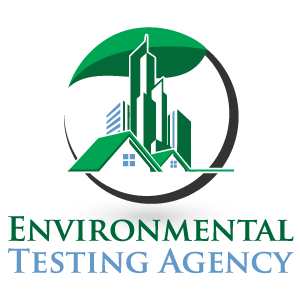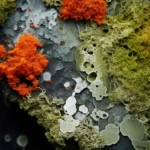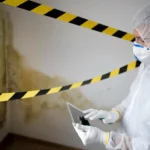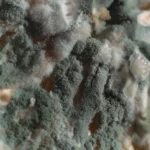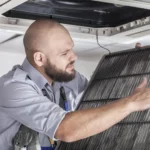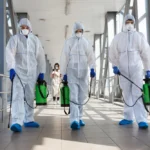Commercial Mold Remediation Guide
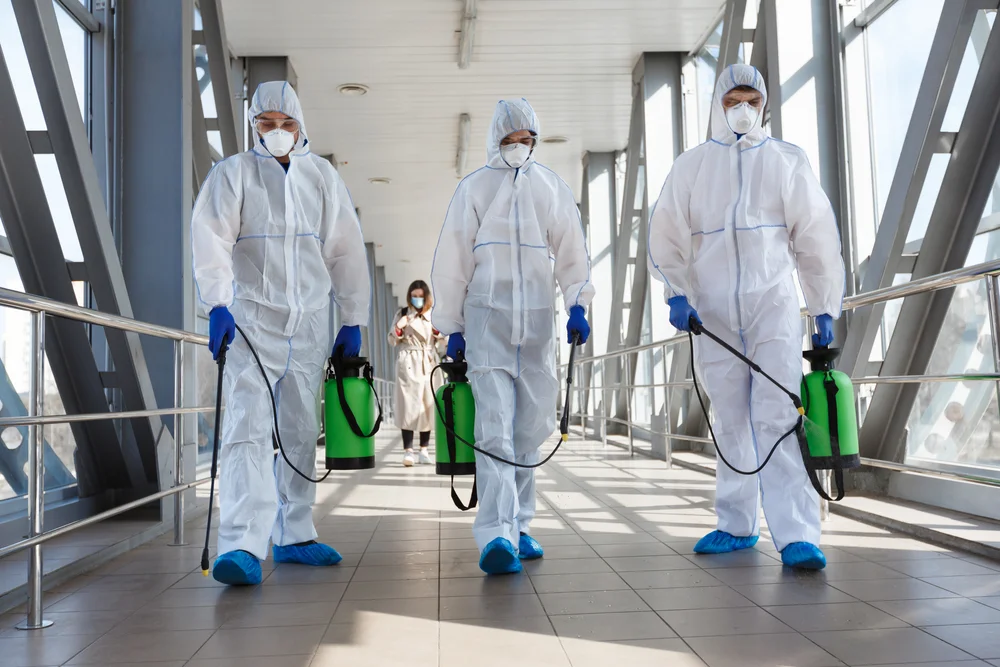
Mold is a common issue that can affect any building, and commercial properties are no exception. Whether you run an office, retail store, hotel, or warehouse, mold can pose serious risks to both your building and the people inside. From property damage to health concerns, mold requires immediate attention.
In this blog, we’ll walk you through everything you need to know about commercial mold remediation, why it’s important, and the process involved in removing mold from your commercial space.
What Is Commercial Mold Remediation?
Commercial mold remediation is the process of identifying, removing, and preventing mold growth in commercial buildings. Mold can develop in any building if moisture is present, and it typically grows in hidden areas like behind walls, under floors, or in HVAC systems.
Mold poses a threat to both the health of building occupants and the integrity of the building itself. Proper remediation ensures the mold is removed safely and effectively, while also addressing the root cause of the problem, moisture or water leaks.

Why Is Commercial Mold Remediation Important?
Here are the key reasons why mold remediation is essential for your commercial property:
1. Health and Safety Concerns
Mold produces spores that can be harmful to human health, especially when inhaled. Individuals with asthma, allergies, or compromised immune systems are particularly vulnerable. Mold exposure can lead to respiratory issues, skin irritation, and even more severe conditions if left untreated.
Taking steps to remediate mold protects the health of everyone in the building—employees, customers, and visitors alike.
2. Property Damage
Mold thrives in damp environments and can quickly spread throughout building materials like drywall, wood, and insulation. The longer mold is left unchecked, the more damage it can cause, potentially compromising the structural integrity of the building.
Mold can weaken walls, floors, and ceilings, and may require costly repairs to restore your property. Addressing mold early reduces the need for extensive and expensive repairs.
3. Compliance with Regulations
Many local, state, and national regulations require businesses to maintain healthy environments for employees and customers. Failing to address mold could result in fines or violations, especially if it impacts air quality or safety standards. Regular mold inspections and timely remediation ensure you remain compliant with OSHA (Occupational Safety and Health Administration) standards and other regulatory requirements.
4. Protecting Your Reputation
Mold problems in your building can damage your reputation. Customers or clients may be hesitant to enter a mold-infested space, and word-of-mouth can spread quickly. Addressing mold issues in a timely and professional manner protects your brand and ensures that customers feel comfortable in your environment.
5. Insurance Considerations
If mold problems are left unchecked, your insurance company may refuse to cover damage caused by mold growth. Many commercial property insurance policies have specific clauses about mold, so addressing the issue quickly can help protect your coverage.
The Mold Remediation Process: Step-by-Step
Mold remediation is a complex process that requires professional expertise. Here’s a breakdown of the steps involved in commercial mold remediation:
1. Inspection and Assessment
The first step in mold remediation is a thorough inspection of the building. Professionals use specialized equipment, like moisture meters and thermal cameras, to locate hidden mold in areas that may not be visible to the naked eye. This step helps assess the extent of the mold problem and determines the appropriate course of action for removal.
2. Containment
Once the affected areas are identified, the next step is containment. Mold spores can easily spread throughout the building, which is why it’s important to set up containment zones. These areas are sealed off using plastic sheeting to prevent spores from traveling to unaffected areas. Ventilation systems are also turned off to avoid contamination via airflow.
3. Removal and Cleaning
After containment is set up, the mold removal process begins. This step involves physically removing the mold from surfaces using specialized cleaning solutions and equipment. In cases where the mold has caused significant damage, materials like drywall or insulation may need to be replaced.
The goal is to remove all visible mold from affected surfaces and ensure that the environment is free from spores.
4. Drying and Dehumidification
Mold thrives in humid conditions, so drying out the affected areas is a crucial step in the remediation process. Professionals use industrial dehumidifiers and fans to reduce moisture levels in the air and on surfaces. This ensures that the environment is inhospitable to mold growth and helps prevent future outbreaks.
5. Post-Remediation Testing
After the mold has been removed and the area is dried, post-remediation testing is often conducted. This involves air or surface sampling to check for any remaining mold spores. The goal is to ensure that the environment is safe for occupancy and that mold levels are within acceptable limits.
6. Prevention
The final step in the process is taking preventive measures to avoid future mold growth. This may include repairing any leaks, improving ventilation, or installing moisture barriers. Regular maintenance and monitoring can also help catch any early signs of mold before it becomes a bigger issue.
Common Types of Mold Found in Commercial Buildings
Mold comes in various types, each with its own characteristics, appearance, and potential health risks. Knowing the types of mold that could be found in your commercial space can help you identify the problem earlier and understand the level of remediation required.
Here are some of the most common types of mold found in commercial buildings:
1. Aspergillus
Aspergillus is a common mold that can grow on many types of materials, including wood, carpets, and drywall. It is often found in areas with high humidity or water damage. While some species of Aspergillus are harmless, others can be allergenic and may lead to respiratory issues, especially in individuals with asthma.
2. Cladosporium
Cladosporium is another common indoor mold, often found in carpets, fabrics, and on damp walls. It usually appears as black, green, or brown patches and can be quite allergenic. Exposure to Cladosporium may cause asthma symptoms, skin irritation, and other respiratory issues.
3. Stachybotrys (Black Mold)
Stachybotrys, also known as black mold, is one of the most infamous and potentially harmful types of mold. It thrives in wet environments, particularly after significant water damage. Black mold is notorious for releasing mycotoxins, which can lead to serious health issues, including respiratory distress, headaches, fatigue, and more. It is often black or greenish-black in color and can cause severe damage to the structure of a building if left untreated.
4. Penicillium
Penicillium is commonly found in indoor environments, particularly in areas with water damage. This mold is often blue or green in color and can be found growing on food, walls, and in HVAC systems. Penicillium is known to cause allergic reactions and respiratory problems, especially in individuals who are sensitive to mold spores.
5. Alternaria
Alternaria is a dark, thick mold typically found on the surface of damp walls, windowsills, and curtains. This mold thrives in areas with high humidity and can cause allergic reactions, asthma attacks, and sinus issues. Alternaria is often identified by its dark brown or black color.
6. Aureobasidium
Aureobasidium is a mold that typically appears as black or pinkish patches. It can be found in areas with wood, wallpaper, or other organic materials. While it is generally less harmful than other molds, it can still cause allergic reactions and may trigger symptoms such as skin irritation and respiratory issues.
Signs You Might Have a Mold Problem in Your Commercial Building
Knowing the signs of mold can help you act fast to prevent further damage. Here are the common signs that indicate you may have a mold problem in your commercial property:
1. Visible Mold Growth
The most obvious sign of a mold issue is seeing it. Mold typically appears as black, green, or white patches or spots on walls, ceilings, floors, or other surfaces. If you see any signs of mold growth, it’s important to act immediately and contact a professional mold remediation service.
2. Musty Odor
A musty or earthy smell is often associated with mold growth. If you detect an unpleasant odor in your building, especially in areas prone to moisture like basements, bathrooms, or HVAC systems, it could be a sign of mold infestation.
3. Increased Allergy Symptoms
If your employees or customers are experiencing unexplained allergy symptoms, such as sneezing, coughing, itchy eyes, or skin rashes, mold could be the culprit. Mold spores in the air can trigger allergic reactions and worsen asthma symptoms.
4. Water Damage
Mold thrives in damp environments, so if your commercial property has experienced water damage due to leaks, floods, or plumbing issues, there’s a high likelihood of mold growth. Look for water stains, warped wood, or peeling paint, as these can be indicators that mold is present.
5. Condensation and Humidity
Excessive moisture and high humidity levels are a breeding ground for mold. If your building is consistently damp, especially in areas like the basement, attic, or bathrooms, mold is likely to form. Installing a humidity meter can help you monitor moisture levels and prevent mold growth.
Mold Testing: How Do You Know If You Have Mold?
Mold testing is essential if you suspect that your commercial building has mold but can’t see it. Professionals use various testing methods to determine the presence and type of mold, as well as the severity of the infestation. Here’s how mold testing typically works:
1. Visual Inspection and Moisture Testing
The first step in mold testing is a visual inspection by a trained professional. They will check areas of the building that are prone to mold growth, such as bathrooms, kitchens, basements, and around water sources. Moisture meters and infrared cameras can also be used to detect hidden moisture, which may indicate mold growth.
2. Air Sampling
Air sampling is one of the most common methods used to test for mold. A pump is used to collect air samples from different parts of the building. These samples are then analyzed to determine the concentration and types of mold spores present in the air. High concentrations of mold spores in the air can indicate a significant mold problem.
3. Surface Sampling
Surface sampling involves taking samples from visible mold growth on walls, floors, or other surfaces. This can be done using swabs, tape lifts, or bulk sampling. These samples are then sent to a laboratory for analysis to identify the mold species.
4. Swab or Bulk Sampling
In cases where visible mold is present, professionals may use swab or bulk sampling methods to gather samples from affected surfaces. This is particularly useful for identifying the extent of mold contamination and determining whether hidden mold is present.
Factors Affecting Mold Remediation Costs
Understanding the costs of commercial mold remediation can help you plan for the process and avoid any surprises. Several factors influence the overall cost of remediation:
1. Size of the Infestation
The larger the mold problem, the more expensive the remediation process will be. Larger areas require more labor, equipment, and time to clean. Mold in hidden or hard-to-reach areas (such as behind walls or in ducts) may also require additional work and testing.
2. Type of Mold
The type of mold present can affect remediation costs. For example, Stachybotrys (black mold) is considered more hazardous and difficult to remove, so remediation costs are generally higher. More extensive containment measures may be needed to remove toxic mold safely.
3. Accessibility of the Affected Areas
If mold is located in difficult-to-access areas like attics or behind walls, it will increase the cost of remediation. Professionals may need to dismantle walls or ceilings to reach the mold, which adds to both labor costs and time.
4. Extent of Water Damage
If water damage is the root cause of mold growth, the extent of the damage will affect the cost of remediation. If the structure is compromised and materials need to be replaced (such as drywall, insulation, or flooring), the costs will increase.
5. Prevention Measures
Implementing prevention measures, such as sealing leaks, improving ventilation, or installing moisture barriers, can add to the cost of the remediation process. However, these measures are essential for preventing future mold growth and reducing the likelihood of recurring issues.

Why You Should Choose Professional Mold Remediation Services
While it’s tempting to try DIY mold removal, commercial mold remediation should always be handled by professionals. Here’s why:
Expertise and Knowledge
Mold remediation professionals are trained to identify, assess, and remove mold safely. They understand the different types of mold, their health risks, and the best removal techniques. Their expertise ensures that the job is done right the first time.
Specialized Equipment
Mold remediation requires specialized equipment, such as HEPA vacuums, air scrubbers, and moisture meters. Professionals have access to the latest tools and technologies to ensure effective mold removal and proper air quality control.
Safety
Mold removal can be hazardous, especially if dealing with toxic mold varieties like black mold. Professionals follow strict safety protocols to protect both themselves and anyone else in the building. They also take precautions to avoid contaminating other areas of the building during the remediation process.
Comprehensive Solutions
Mold remediation isn’t just about removing the mold, it’s about addressing the root cause of the problem. Professionals not only remove the mold but also take steps to fix leaks, improve ventilation, and prevent future mold growth, ensuring a long-term solution.
Conclusion
Mold in commercial properties is a serious issue that can have far-reaching consequences for both the health of those in the building and the condition of the property. Understanding the types of mold, recognizing the signs of mold problems, and investing in proper mold testing and remediation are essential steps for ensuring the safety and longevity of your commercial space.
By acting quickly and choosing professional mold remediation services, you can address the issue before it causes significant damage or health risks. Regular inspections, moisture control, and early intervention can help keep your building mold-free and your business running smoothly.
FAQs About Commercial Mold Remediation Guide
1. How long does commercial mold remediation usually take?
The duration depends on the extent of the infestation but typically ranges from 3 days to over a week for larger projects.
2. Is mold remediation safe to perform during business hours?
It’s best done after hours or during closures since the process involves containment zones and potentially disruptive equipment.
3. Can mold come back after remediation?
Yes, if the source of moisture isn’t resolved. Regular inspections and moisture control are key to long-term prevention.
4. Will insurance cover mold remediation costs?
Some commercial policies may cover it if the mold is due to a covered event. Always check with your insurer in advance.
5. How do I choose a reliable mold remediation company?
Look for certified professionals with IICRC credentials, good reviews, and experience handling commercial properties.
6. What equipment is used during mold remediation?
HEPA vacuums, air scrubbers, dehumidifiers, and moisture meters are commonly used to ensure thorough mold removal.
7. Are there any regulations I should be aware of?
Yes. OSHA and local health departments often require businesses to maintain mold-free environments to ensure safety.
8. Can HVAC systems spread mold throughout a building?
Absolutely. Mold spores can travel through ducts, which is why HVAC inspection and cleaning are crucial.
9. Do I need to shut down my business during remediation?
It depends on the severity and location of the mold. Small areas may allow partial operation, while larger cases may require temporary closure.
10. How often should I inspect my property for mold?
At least twice a year or after any water-related incidents, such as leaks or floods, to catch mold early.

